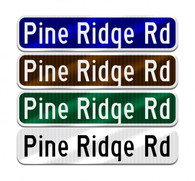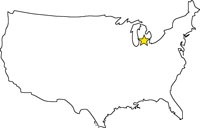How Are Colors for Street and Road Signs Chosen?
Posted by Jeffrey Dornbos on 14th Nov 2016
The colors of street and road signs are almost second nature to drivers and passengers alike. These colors have been ingrained in our psyche since we were young kids, and our mind reacts instantly without us even thinking about it. While many people rarely question why these signs are the colors that they are, at Dornbos Sign & Safety, we thought it would be a good idea to explain some of the rationale behind why a stop sign is red, a construction sign is orange, a street sign is green and so on.
Color and Meaning Behind Today’s Sign Colors
Colors are often classified into three distinct groups: warm colors (red, yellow, orange), cool colors (blue, green purple), and finally neutral colors (white, black, brown). Below we’ll describe when and why each of these distinct color groups is used related to street and road signs.
Warm Colors
Warm colors often are meant to create emotion, which is why the vast majority of advisory signs follow this model.
For example, Stop, Do Not Enter, and Yield signs are almost always communicated by way of red signs. Either the vast majority of the sign is red with white lettering, or the sign is white with red lettering. All of these examples are meant to catch the eye and draw attention to an immediate action that needs to take place on the part of the driver.
Other signs use warm colors to inform drivers of either temporary or permanent road hazards. Temporary hazards, which are often used during construction projects often use orange signs with black text, while more permanent signage such as pedestrian areas often use yellow signs with black lettering to provide the highest level of visibility both day or night.
Neutral or Cool Colors
Information that doesn’t require a driver’s immediate response is often placed on either cool or neutral colored signs. This coloring is meant to not necessarily demand the driver’s immediate attention, but rather to be universally recognizable on major roads. For instance, blue signs typically represent rest areas and restaurants, green signs represent exit markers and city street signs, and brown signs often reflect some type of outdoor recreation area.
Signs that are meant to be more informative typically use only black and white. These signs typically indicate critical information like speed limits and potential road hazards. These signs often use black text on a white background for ultimate clarity and visibility.
Unsure of the Color and Types of Signs You Need?
We hope you enjoyed our brief explanation of the use of color as it relates to road and street signs. At Dornbos Sign & Safety, we’ve been designing and selling all types of road and street signs for decades. For more information on the ideal type of sign needed for your unique application, feel free to reach out to our team by phone at 800-922-0029 or through our contact form.




